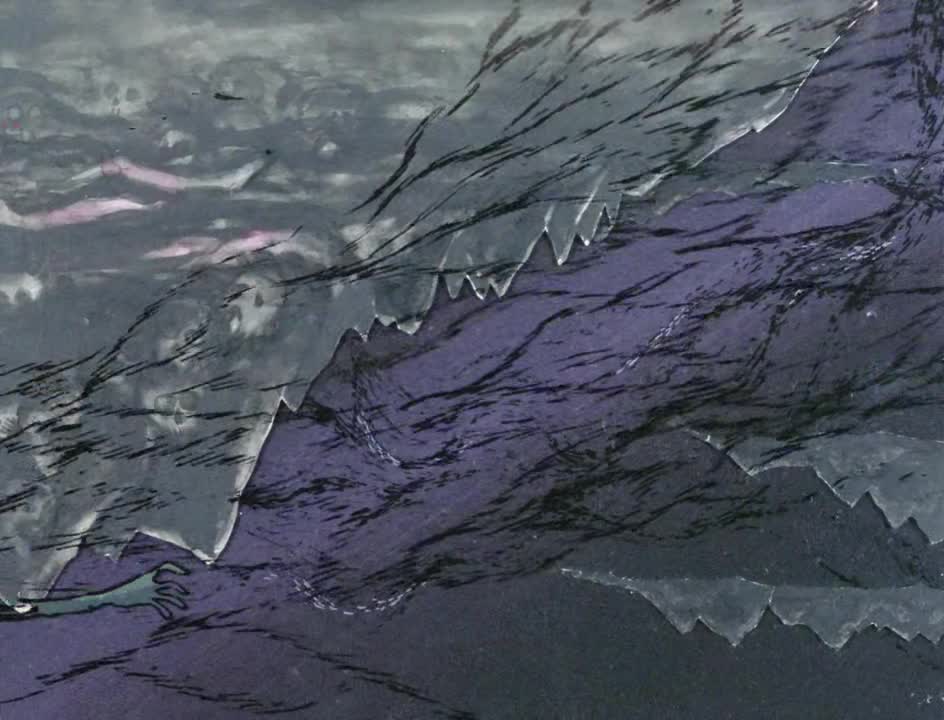Premium Only Content

Belladonna of Sadness c. 1973 : Perceived historical misogyny
Belladonna of Sadness was singular at the time of its release in 1973, addressing perceived historical misogyny and the ways that it can compromise or, in some cases, annihilate the bodies of women. Rendered through beautiful watercolor paintings, much of Belladonna is brought to life in close-ups of its protagonist, Jeanne, whose tragic face often reflects the complicated emotions of Lillian Gish’s work as D.W. Griffith’s tragic martyr. This story of extreme misogyny and violence does not make the implication that Jeanne is a universal figure of woman, but it does present her anguish in a journey reminiscent of Eve’s in the Bible. Jeanne has more in common with the tempting snake than the average woman, but the fatalism of her story, and the way it is rendered through oozing, wretched, red and black paint and a gaze of furious intent contains within it an elemental rage toward those who attempt to fracture the psyche of women everywhere.
Belladonna climaxes, in a way, in its prolonged orgy sequence, which plays in direct opposition to earlier scenes of rape. Jeanne draws the villagers, who believe in God, into a world of animal lust and primal instinct, illuminating a central hypocrisy in those who lift up a higher power only to crush those who are deemed filthy or different. Yamamoto’s Jeanne is a seductive figure, and the way she was painted had prolonged effects in the way that anime heroines were conceived of going forward. It’s easy to trace the DNA of this film to the later works of Mamoru Oshii (Ghost in the Shell) or Satoshi Kon (Perfect Blue). This is also the rare animated feature that has found soul mates of form in the likes of such horror films as Jonathan Glazer’s Under the Skin and Rob Zombie’s The Lords of Salem — works also interested in the ways stories of martyred women are woven throughout time.
https://www.vulture.com/article/most-influential-best-scenes-animation-history.html
-
 0:32
0:32
FUNNY MOMENTS
4 years agoHistorical Wooden Statue
26 -
 0:05
0:05
aimht
4 years ago $0.01 earnedHISTORICAL PRESIDENT
605 -
 7:03
7:03
The Kaz
4 years ago $0.07 earnedPolitical and Historical Books
273 -
 0:56
0:56
ArizonaTimelessTourist
4 years ago $0.01 earnedHidden Historical Marker
98 -
 2:30
2:30
Webbtime
3 years agoNelder Grove - Big Tree Historical Area
33 -
 0:14
0:14
cynsheng
4 years agoBirdseye view of historical Malacca
23 -
 1:59
1:59
KJRH
4 years agoHealing from Historical Trauma
320 -
 14:22:40
14:22:40
The Quartering
1 day agoYule Log Christmas MAGA Edition With Memes! Come Hang Out!
242K32 -
 38:41
38:41
MYLUNCHBREAK CHANNEL PAGE
1 day agoTimeline Begins in 1800? - Pt 1 & 2
120K74 -
 1:23:41
1:23:41
Game On!
1 day ago $14.11 earnedNetflix NFL Christmas Games Preview and Predictions!
102K13